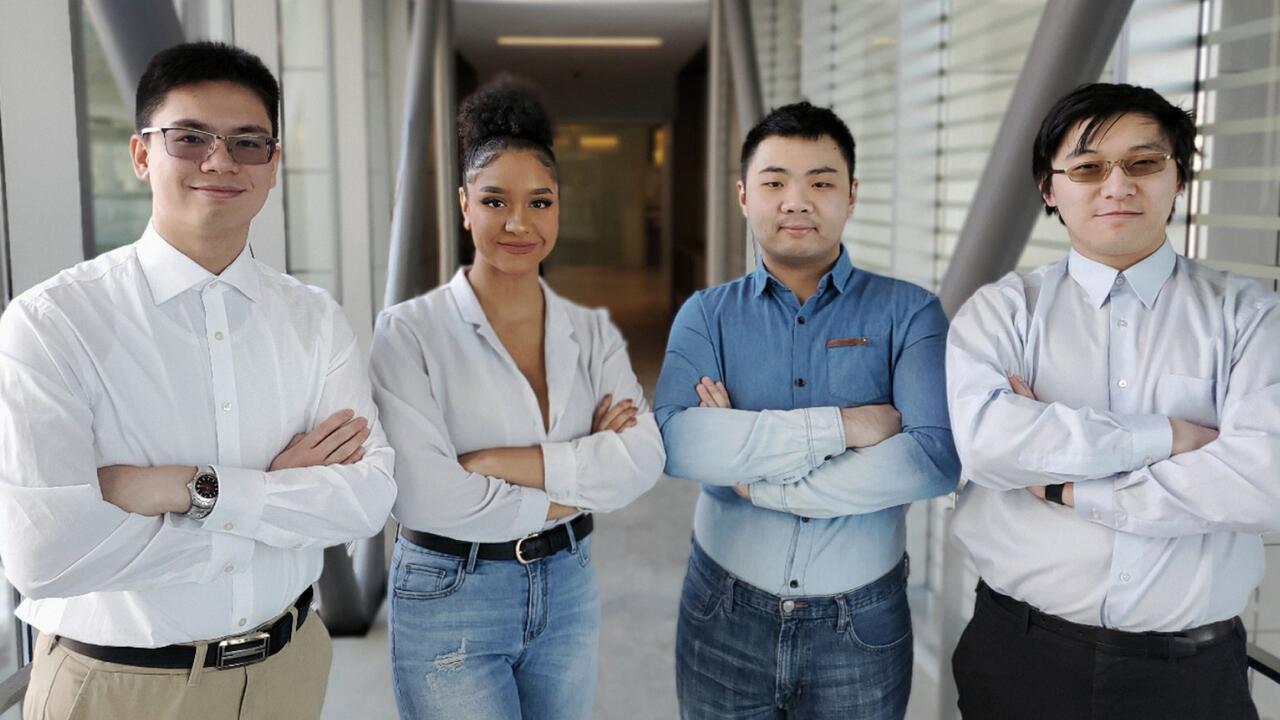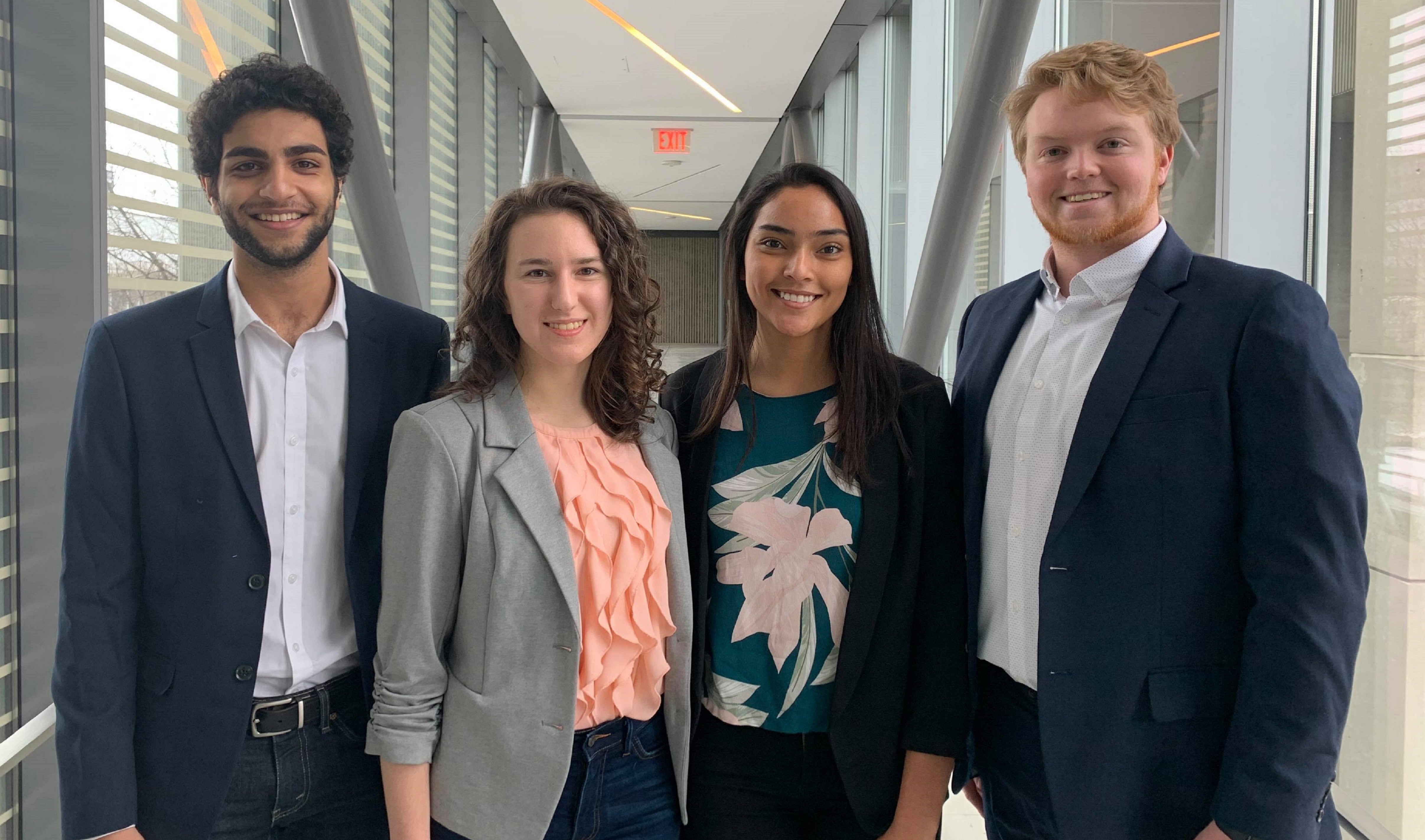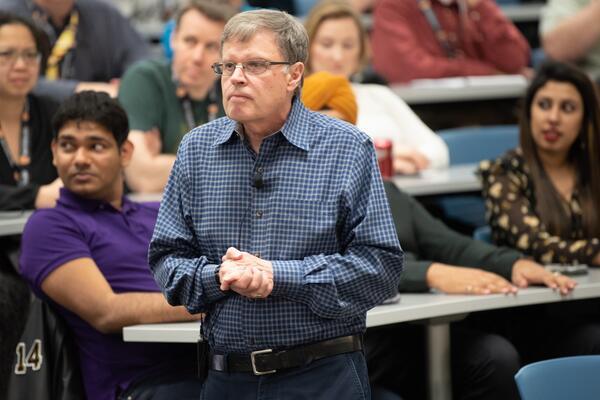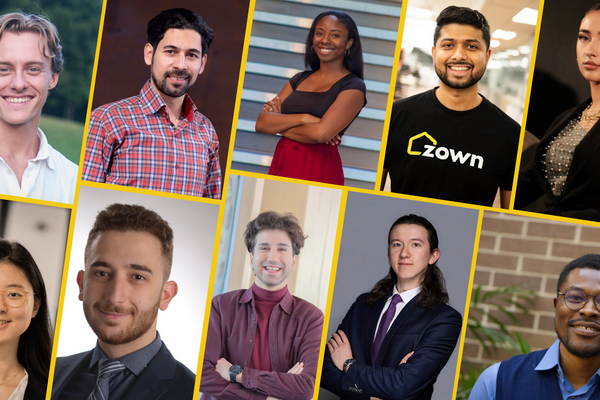
Innovating at the annual Esch awards
Six teams of graduating students win $10,000 each to commercialize Capstone Design projects on everything from picking tomatoes to treating foot ulcers

Six teams of graduating students win $10,000 each to commercialize Capstone Design projects on everything from picking tomatoes to treating foot ulcers
By Brian Caldwell Faculty of EngineeringInnovative solutions to serious medical problems took four of six $10,000 prizes up for grabs when student teams competed via video this month in an annual pitch competition for startup companies.
The new format, which replaced in-person presentations at the Norman Esch Entrepreneurship Awards for Capstone Design due to the coronavirus crisis, gave graduating students five minutes to explain their projects instead of the usual three minutes, followed by questions.
The winning ideas, picked from 15 finalists by a panel of judges who reviewed the videos, included wearable technology inspired by a team member who suffered a heat stroke while playing golf on a hot summer day and ended up in hospital.

KnowStroke members (l-r) Ahmad Lakhani, Eniko Zsoldos, Methely Sharma and Matthew Pley are developing wearable technology to prevent heat-related illness.
Members of KnowStroke - nanotechnology engineering students Ahmad Lakhani, Eniko Zsoldos, Methely Sharma and Matthew Pley - responded by developing an armband to monitor workers in construction, agriculture and other fields.
Sensors in the band, including a novel sweat sensor, track biometrics and alert supervisors via a mobile app when workers are at risk of heat-related problems, including exertional heat stroke (EHS).
Zsoldos told judges in her recorded pitch that EHS annually causes over 6,000 hospitalizations and 600 deaths in the United States alone.
“That is far too many for something that is entirely preventable,” she said.
Launched in 2014 and funded by The Esch Foundation, the competition supports creative, entrepreneurial students in the pursuit of research and development, and its commercialization for the benefit of Canada.
The other winning teams for 2020 were:
iuvoderm (Tiana Colantonio, Jonathan Wu, Hillman Leung and Adrianus Sukuramsyah - nanotechnology engineering)
A quarter of 425 million people with diabetes worldwide develop foot ulcers, which often result in amputation. The team is developing a patch for ulcers that is loaded with antimicrobial drugs to prevent and treat infection.
“Our dressing will only need replacing once a day,” said Colantonio. “This provides an inexpensive, easy to follow, set and forget solution unique to the market.”
Pluto Care (Joanne Magbitang, Vincent Shadbolt and Haneya Tahiri - systems design engineering)
Children who need help from occupational therapists usually don’t do their homework - boring, repetitive exercises. Pluto Care has designed a platform to address that problem with video games that also track progress and compliance.
“Research conducted by computer scientists and therapists in the field have proven without a doubt that video games and occupational therapy are incomparable when it comes to patient motivation,” said Shadbolt.
TrakTab (Spencer Dobrik, Aaron Cotter, Shirui Wang and David Tsenter - software engineering)
Two-thirds of people 65 and older take five or more prescribed pills a day, and half of them admit they don’t take them on time. TrakTab is a simple, internet of things (IoT) pill box that monitors medication adherence, alerts patients when they’ve missed a dose and keeps family members in the loop via smartphones.
“We all know how stubborn some seniors can be,” said Tsenter. “They don’t want to change and we’re not asking them to.”
Tomat.io (Andrew Constantinescu, Mitch Phillips, Bradley Whitlock and Adam Marchand - mechanical and mechatronics engineering)
A growing labour shortage is a major problem for farmers who grow beefsteak tomatoes in greenhouses, a thriving business in Ontario. Team members combined computer vision and robotics in a machine to recognize when they are ripe and pick them.
“Farmers are looking for ways to automate the harvesting of tomatoes because labour is the number one driver of their costs,” said Constantinescu.
Scope (Alisha Bhanji, Ishan Mishra, Holden Beggs, Fernando Pena Cantu and Zhenle Cao - nanotechnology engineering)
The lenses in smartphone cameras represent a $16.7 billion market. Scope aims to tap it with a lossless zoom function that uses liquid crystal lenses that are 50 per cent smaller and 15 per cent cheaper than the alternatives.
“Our expert team is focusing on what’s important - fixing smartphone lenses to let you take great photos,” said Beggs.

Read more
Here are the people and events behind some of this year’s most compelling Waterloo stories

Read more
For more than four decades, Waterloo professor Larry Smith has helped build the University's reputation for innovation and entrepreneurial excellence

Read more
From transforming solutions for homeownership to advancing health care interventions, Waterloo talent continues to disrupt industries and drive change
Read
Engineering stories
Visit
Waterloo Engineering home
Contact
Waterloo Engineering
The University of Waterloo acknowledges that much of our work takes place on the traditional territory of the Neutral, Anishinaabeg, and Haudenosaunee peoples. Our main campus is situated on the Haldimand Tract, the land granted to the Six Nations that includes six miles on each side of the Grand River. Our active work toward reconciliation takes place across our campuses through research, learning, teaching, and community building, and is co-ordinated within the Office of Indigenous Relations.